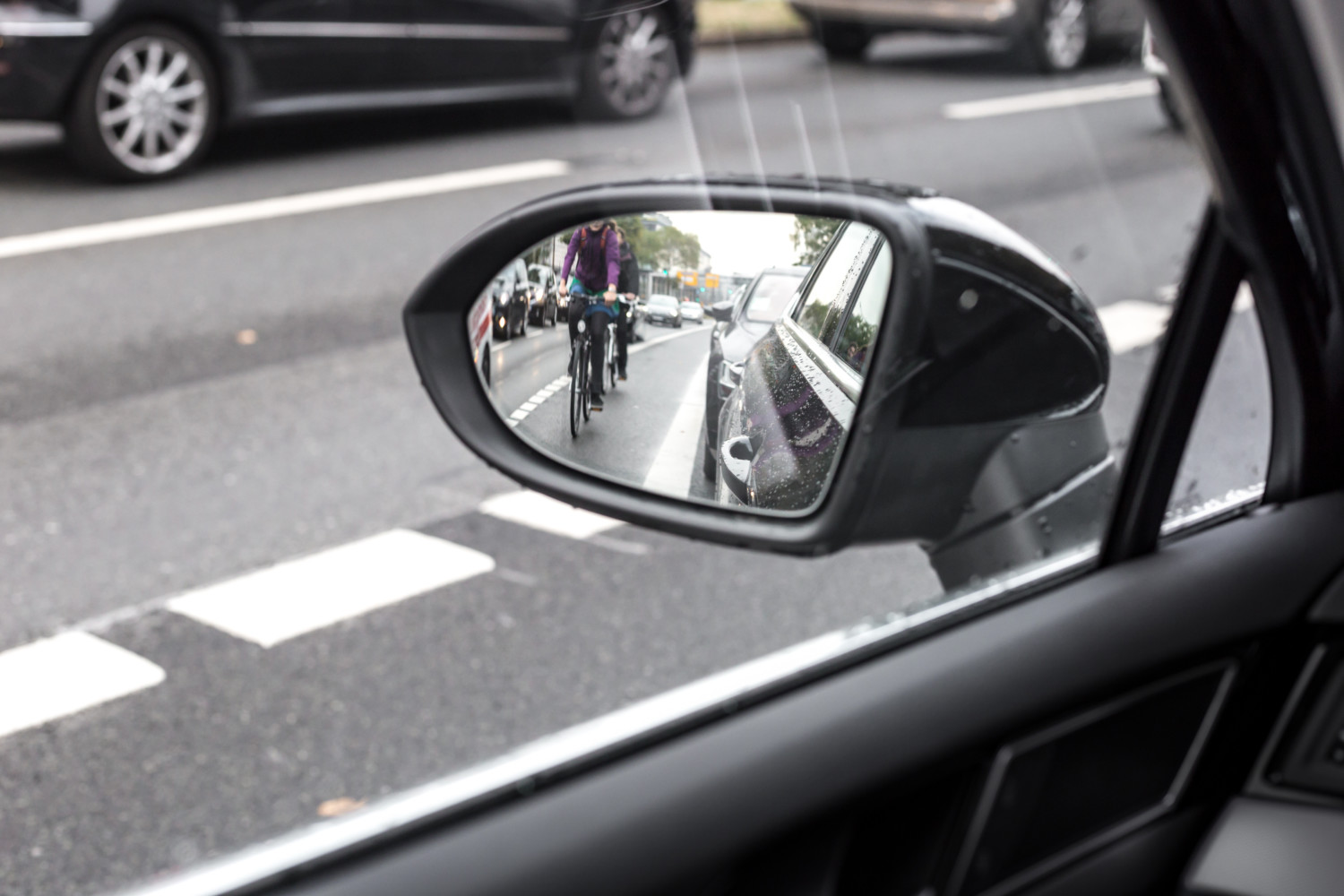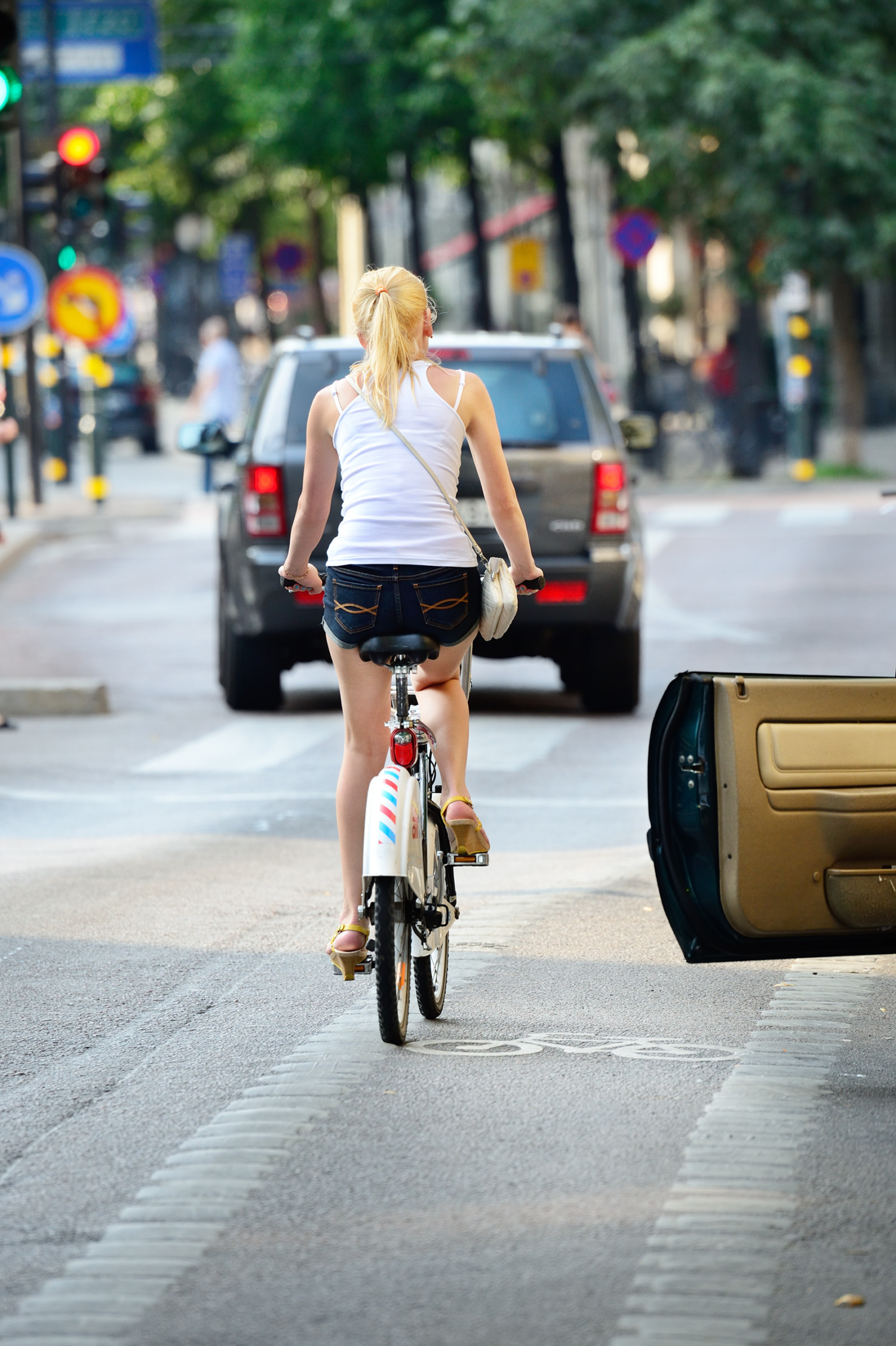Cycling is a great way to get around, stay active and cut down on the use of motor vehicles powered by fossil fuels. But being a bicyclist that shares the road with cars can also be a dangerous activity.
That’s not just because of accidents that happen when a moving vehicle hits a biker. In fact, one of the more common circumstances for a cyclist-car accident happens while a car is parked.
People getting out of cars in U.S. cities don’t often take the time to check if someone bicycling is entering their “door zone.” With the advent of bike lanes, cyclists are riding parallel even closer to parked cars.

Frequent “dooring” accidents — when a car door is opened into the path of an oncoming cyclist who hits the door — take place because of this lack of awareness, according to dutchreach.org, a website started by Massachusetts doctor Michael Charney. Charney collects statistics on “doorings” and advocates for the Dutch Reach as a safety method.
But what is the Dutch Reach? Instead of opening a door with your hand that’s closest to the door handle, use your hand on the opposite side. This will cause you to turn your body in the direction of the road and get naturally positioned to see if anyone is coming behind you. The move is also known as the far-hand reach.

The name for this concept came from the Netherlands, where cycling is more popular than driving and Dutch driver’s education programs have long taught the technique. Some U.S. states and national driver’s education programs are catching on.
While not all Dutch drivers use the opposite-hand door opening technique, they are much more aware of bicyclists on the roads since it is a part of the country’s culture.
Outside Magazine shared a video back in 2016 showing how to do the very simple technique. (The National Safety Council also has a shorter demo of the move.)
Aside from getting a chauffeur to drive you around and open your car door for you, the Dutch Reach might be the best and most simple way for car drivers and passengers to avoid causing a “dooring” accident. At the very least, turning your head to see if anything is coming your way before exiting your car is a very good idea.
This story originally appeared on Simplemost. Checkout Simplemost for additional stories.


